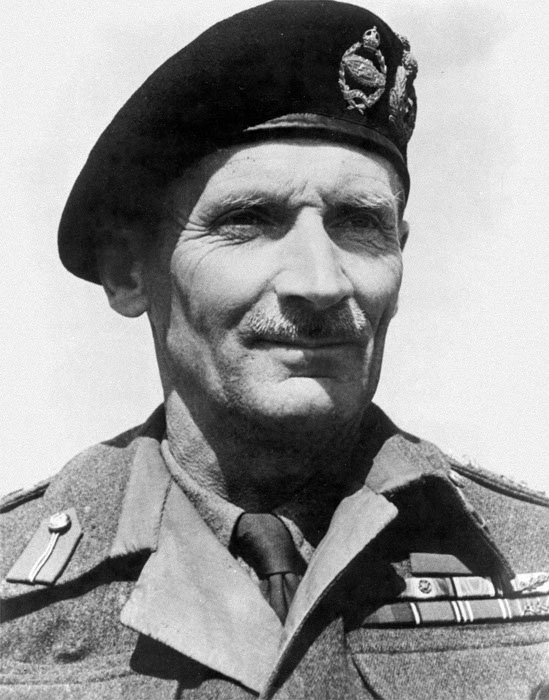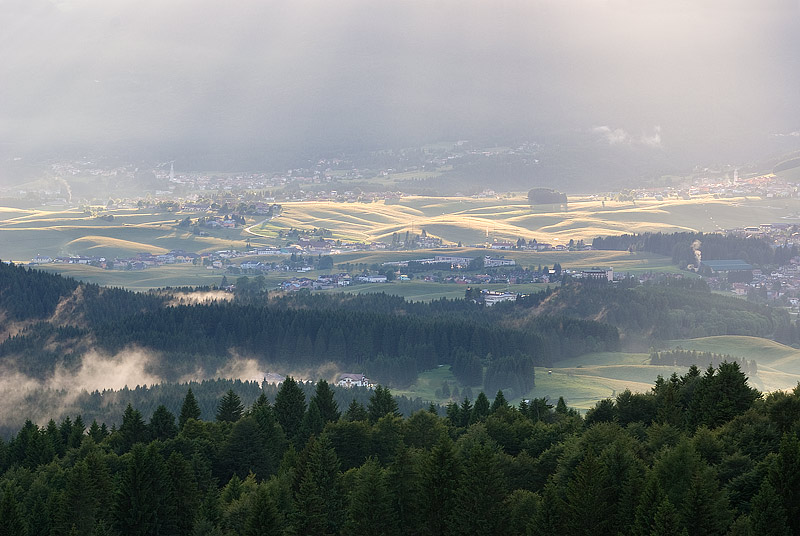|
Henry Kelly (VC)
Major Henry Kelly VC, MC & Bar (10 July 1887 – 18 July 1960) was an English recipient of the Victoria Cross, the highest and most prestigious award for gallantry in the face of the enemy that can be awarded to British and Commonwealth forces. Kelly was born on 10 July 1887 in Collyhurst, Manchester. He was a temporary second lieutenant in the 10th Battalion, The Duke of Wellington's (West Riding) Regiment during the First World War at the time of his award of the Victoria Cross in 1916. He was awarded a Military Cross and later a Bar to that medal in Italy in 1918. Other Military awards include the Belgian Croix de guerre, the French Médaille militaire and the Spanish Grand Laurelled Cross of San Fernando. Early life Henry Kelly was born to Charles Kelly of Dublin and Jane (née McGarry) of Manchester. He was left the oldest of 10 children after his father died in 1904. He was educated at St Patrick's School and Xaverian College, both in Manchester. After moving to Ki ... [...More Info...] [...Related Items...] OR: [Wikipedia] [Google] [Baidu] |
Collyhurst
Collyhurst is an inner city area of Manchester, England, northeast of the city centre on Rochdale Road (A664) and Oldham Road (A62), bounded by Smedley, Harpurhey and Monsall to the north, Miles Platting to the east, Ancoats to the south, and the River Irk to the west. Prominent buildings include two Roman Catholic churches, St Patrick's and St Malachy's. Collyhurst sandstone Much of the red sandstone used for building in Manchester and the surrounding area, including stone for the Roman fort at Castlefield, St Ann's Church in the city centre, Manchester Cathedral and the original buildings of Chetham's Hospital, came from Collyhurst Quarry. Geologists use the term Collyhurst Sandstone for this type of soft red sandstone, which occurs in North West England. It is a fine to medium grained sedimentary rock, created from desert sands blown into dune formations during the Early Permian period when the area which now constitutes the British Isles was within the desert belts to th ... [...More Info...] [...Related Items...] OR: [Wikipedia] [Google] [Baidu] |
Médaille Militaire
The ''Médaille militaire'' ( en, Military Medal) is a military decoration of the French Republic for other ranks for meritorious service and acts of bravery in action against an enemy force. It is the third highest award of the French Republic, after the Légion d'honneur, a civil and military order, and the ordre de la Libération, a Second World War-only order. The ''Médaille militaire'' is therefore the most senior entirely military active French decoration. During World War I, 230,000 ''médailles'' were awarded, when 1,400,000 French Army soldiers were killed and 3,000,000 wounded. For comparison, the UK Military Medal was awarded on 115,000 ... [...More Info...] [...Related Items...] OR: [Wikipedia] [Google] [Baidu] |
Asiago
Asiago (; Venetian: ''Axiago'', Cimbrian: ''Slege'', German: ''Schlägen'' ) is a minor township (population roughly 6,500) in the surrounding plateau region (the ''Altopiano di Asiago'' or '' Altopiano dei Sette Comuni'', Asiago plateau) in the Province of Vicenza in the Veneto region of Northeastern Italy. It is near the border between the Veneto and Trentino-Alto Adige/Südtirol regions in the foothills of the Alps, approximately equidistant (60 km) from Trento to the west and Vicenza to the south. The Asiago region is the origin of Asiago cheese. The town was the site of a major battle between Austrian and Italian forces on the Alpine Front of World War I. It is a major ski resort destination, and the site of the Astrophysical Observatory of Asiago, operated by the University of Padua. Geography Climate Culture Until the middle of the nineteenth century many of the people of Asiago spoke Cimbrian, an ancient German dialect. Asiago is the birthplace of auth ... [...More Info...] [...Related Items...] OR: [Wikipedia] [Google] [Baidu] |
Le Sars
Le Sars is a commune in the Pas-de-Calais department in the Hauts-de-France region of France. Geography Le Sars is situated south of Arras, at the junction of the D11 and the D929 roads. Population Places of interest * The church of St.Pierre, rebuilt along with the rest of the village, after World War I. See also *Communes of the Pas-de-Calais department The following is a list of the 890 communes of the Pas-de-Calais department of France. The communes cooperate in the following intercommunalities (as of 2020):Sars {{Arras-geo-stub ... [...More Info...] [...Related Items...] OR: [Wikipedia] [Google] [Baidu] |
Manchester War Memorial 2018 09
Manchester () is a city in Greater Manchester, England. It had a population of 552,000 in 2021. It is bordered by the Cheshire Plain to the south, the Pennines to the north and east, and the neighbouring city of Salford to the west. The two cities and the surrounding towns form one of the United Kingdom's most populous conurbations, the Greater Manchester Built-up Area, which has a population of 2.87 million. The history of Manchester began with the civilian settlement associated with the Roman fort ('' castra'') of ''Mamucium'' or ''Mancunium'', established in about AD 79 on a sandstone bluff near the confluence of the rivers Medlock and Irwell. Historically part of Lancashire, areas of Cheshire south of the River Mersey were incorporated into Manchester in the 20th century, including Wythenshawe in 1931. Throughout the Middle Ages Manchester remained a manorial township, but began to expand "at an astonishing rate" around the turn of the 19th century. Manchester's un ... [...More Info...] [...Related Items...] OR: [Wikipedia] [Google] [Baidu] |
Duke Of Wellington's Regiment
The Duke of Wellington's Regiment (West Riding) was a line infantry regiment of the British Army, forming part of the King's Division. In 1702, Colonel George Hastings, 8th Earl of Huntingdon, was authorised to raise a new regiment, which he did in and around the city of Gloucester. As was the custom in those days the regiment was named Huntingdon's Regiment after its Colonel. As Colonel succeeded Colonel the name changed, but in 1751 regiments were given numbers, and the regiment was from that time officially known as the 33rd Regiment of Foot. In 1782, the regiment's title was changed to the 33rd (or First Yorkshire West Riding) Regiment, thus formalising an association with the West Riding of Yorkshire which, even then, had been long established. The first Duke of Wellington died in 1852 and in the following year Queen Victoria, in recognition of the regiment's long ties to him, ordered that the regiment's title be changed to the 33rd (or The Duke of Wellington's) Regiment. ... [...More Info...] [...Related Items...] OR: [Wikipedia] [Google] [Baidu] |
Queen's Own Cameron Highlanders
The Queen's Own Cameron Highlanders or 79th (The Queen's Own Cameron Highlanders) Regiment of Foot was a line infantry regiment of the British Army, raised in 1793. It amalgamated with the Seaforth Highlanders (Ross-shire Buffs, The Duke of Albany's) to form the Queen's Own Highlanders in 1961. History The regiment was raised as the 79th Regiment of Foot (Cameronian Volunteers) on 17 August 1793 at Fort William from among the members of the Clan Cameron by Sir Alan Cameron of Erracht.Jameson, p. 2 Wars with France 1793 – 1815 The regiment was deployed briefly to Ireland and southern England, then to Flanders in 1794 where it took part in an unsuccessful campaign under the command of the Duke of York during the French Revolutionary Wars.Jameson, p. 3 On its return to England the 79th Foot was listed for disbandment, with the men being drafted into other units. In the end the regiment was reprieved, being instead posted to the West Indies in 1795; after a two-year tour ... [...More Info...] [...Related Items...] OR: [Wikipedia] [Google] [Baidu] |
Moston, Greater Manchester
Moston is a suburb of Manchester, in North West England, approximately north-east of the city centre. Historically in Lancashire, Moston is a predominantly residential area, with a population of 14,518 at the 2011 census and an area of approximately . History The name Moston may derive from the Old English words ''moss'' and ''ton'', where ''moss'' usually referred to a place that was mossy, marshy or peat bog, and ''ton'' signified a town or settlement. The area of White Moss still retains these characteristics. Historical records of Moston date back as far as 1301. The earliest historical archives are of a charter from the Lord of the Manor of Manchester, Thomas Grelle. Although in 1320 Moston was called a hamlet of Manchester, in some deeds it is spoken of as lying within the township and parish of Ashton-under-Lyne. That the lords of Ashton had in early times rights in Moston also is shown by a fine of 1195, from which it appears that on a division Robert son of Bernar ... [...More Info...] [...Related Items...] OR: [Wikipedia] [Google] [Baidu] |
Xaverian College
Xaverian College is a Roman Catholic college in Manchester, England, south of the city centre in Rusholme. Established in 1862, Xaverian College has become one of the most oversubscribed Sixth form college in Greater Manchester, along with Loreto College and Ashton Sixth Form College. It consistently ranks in the top 10 facilities for 16-18 education. Xaverian College is a member of the Association of Colleges. As of 2019, the acceptance rate is 30%. It is near world-renowned educational institutions such as the University of Manchester and the Royal Northern College of Music. As it is in partnership with the University of Manchester, Xaverian houses the foundational courses of Sciences on behalf of UoM and Xaverian College students are also able to access the University of Manchester Library with over 4 million resources able to be used. History 1862-1976 The Xaverian Brothers, or Congregation of St Francis Xavier (CFX), are a Roman Catholic religious order founded by Theo ... [...More Info...] [...Related Items...] OR: [Wikipedia] [Google] [Baidu] |
Dublin
Dublin (; , or ) is the capital and largest city of Ireland. On a bay at the mouth of the River Liffey, it is in the province of Leinster, bordered on the south by the Dublin Mountains, a part of the Wicklow Mountains range. At the 2016 census it had a population of 1,173,179, while the preliminary results of the 2022 census recorded that County Dublin as a whole had a population of 1,450,701, and that the population of the Greater Dublin Area was over 2 million, or roughly 40% of the Republic of Ireland's total population. A settlement was established in the area by the Gaels during or before the 7th century, followed by the Vikings. As the Kingdom of Dublin grew, it became Ireland's principal settlement by the 12th century Anglo-Norman invasion of Ireland. The city expanded rapidly from the 17th century and was briefly the second largest in the British Empire and sixth largest in Western Europe after the Acts of Union in 1800. Following independence in 1922, ... [...More Info...] [...Related Items...] OR: [Wikipedia] [Google] [Baidu] |
Croix De Guerre (Belgium)
The ''Croix de guerre'' (French) or ''Oorlogskruis'' ( Dutch), both literally translating as "Cross of War", is a military decoration of the Kingdom of Belgium established by royal decree on 25 October 1915. It was primarily awarded for bravery or other military virtue on the battlefield. The award was reestablished on 20 July 1940 by the Belgian government in exile for recognition of bravery and military virtue during World War II. The post-1940 decoration could also be awarded to units that were cited. The decoration was again reestablished by royal decree on 3 April 1954 for award during future conflicts. World War I Award statute The World War I ''Croix'' de guerre was established by royal decree on 25 October 1915 as an award for bravery or other military virtue on the battlefield. It was only awarded to individuals. The ''Croix de guerre'' was not only awarded for bravery but also for three years or more of service on the front line, or for good conduct on the battlefiel ... [...More Info...] [...Related Items...] OR: [Wikipedia] [Google] [Baidu] |
Second Lieutenant
Second lieutenant is a junior commissioned officer military rank in many armed forces, comparable to NATO OF-1 rank. Australia The rank of second lieutenant existed in the military forces of the Australian colonies and Australian Army until 1986. In the colonial forces, which closely followed the practices of the British military, the rank of second lieutenant began to replace ranks such as ensign and cornet from 1871. New appointments to the rank of second lieutenant ceased in the regular army in 1986. Immediately prior to this change, the rank had been effectively reserved for new graduates from the Officer Cadet School, Portsea which closed in 1985. (Graduates of the Australian Defence Force Academy (ADFA) and the Royal Military College, Duntroon (RMC-D) are commissioned as lieutenants.). The rank of second lieutenant is only appointed to officers in special appointments such as training institutions, university regiments and while under probation during training. Tra ... [...More Info...] [...Related Items...] OR: [Wikipedia] [Google] [Baidu] |






_2018.png)
.jpg)
